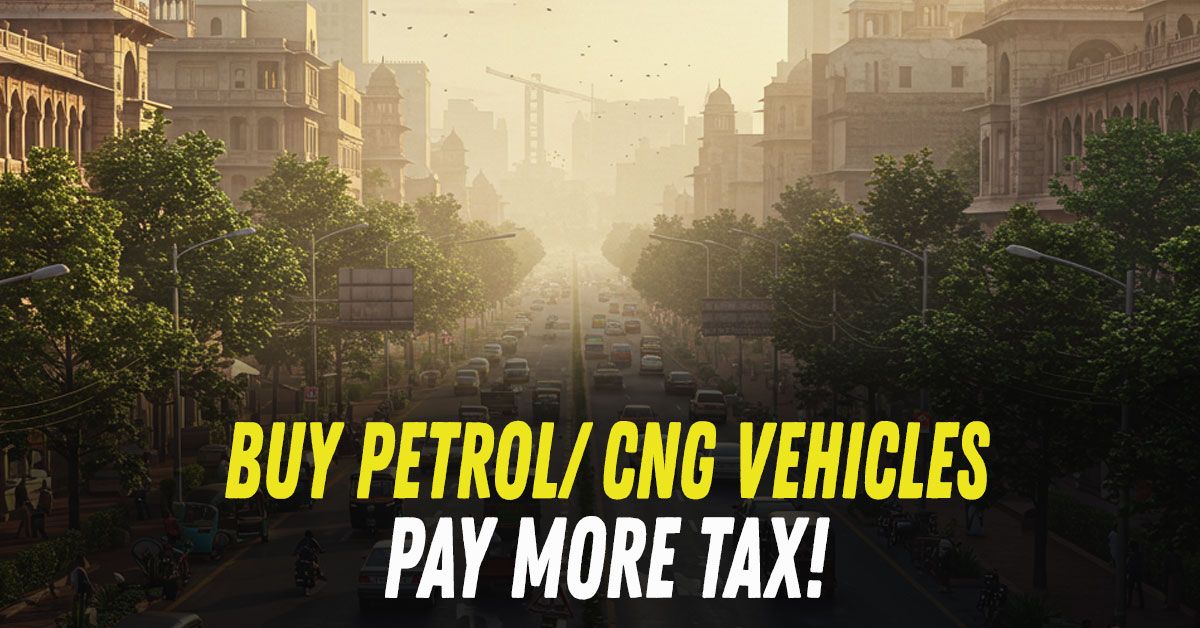Inside Govt's New Plan To Make You Buy Only Electric Cars And Dump Petrol/CNG Cars


Delhi has recently been creating headlines with its aggressive push for electric vehicles and cleaner mobility solutions. The city may soon introduce an amended electric vehicle (EV) policy that proposes to impose a 'Green Cess' on new petrol, diesel, and CNG vehicles. Owning them is thus going to get more expensive. This step is meant to discourage internal combustion engine (ICE) vehicle sales and push more people toward choosing electric alternatives.
At present, diesel vehicles in Delhi already carry a 1 percent green cess. Now, the government wants to extend this to petrol and CNG vehicles as well. This means anyone buying a new car, scooter, or any other petrol or CNG vehicle may soon have to pay more. If the proposal is approved by the cabinet, the higher cost will apply to all such new vehicle purchases in the city.
Officials are also considering a fuel-based cess. Under this, petrol and CNG may be taxed at 50 paise per liter, while diesel may see a ₹1 per liter hike. However, this part of the proposal is still being discussed and not yet finalised.
While petrol and CNG vehicles are being penalized, EVs are getting a fresh round of support. The new policy includes purchase subsidies and lower interest rates on loans for electric vehicles. E-cycles could get a subsidy of up to ₹5,500. For e-rickshaws, e-carts, and electric light commercial vehicles, the benefit would go up to ₹30,000.
For two-wheelers, the subsidy will be ₹5,000 per kWh of battery capacity, with a cap of ₹30,000. On top of this, private EV buyers could get a 4% cut in loan interest rates, while commercial EVs may get 3% relief.
The green cess isn’t a punishment—it is but a plan to build a cleaner future. The government expects to collect around ₹300 crore each year from these levies. This money will be used to expand EV charging networks and improve the city’s green transport infrastructure.
The draft policy doesn’t stop at new vehicle sales. It also proposes a green levy on older vehicles during fitness and pollution tests. Two-wheelers older than 10 years may be charged ₹2,000. Four-wheelers could pay ₹10,000. The government is also considering a ₹10,000 fitness test fee for older commercial vehicles.
However, officials say they may ease this burden on two-wheeler owners to avoid backlash from daily commuters.
Last year, over 7 lakh vehicles were registered in Delhi. Out of these, petrol vehicles made up the majority. Only around 68,000 were battery-operated, and just 12,430 were pure electric vehicles. These numbers show that ICE vehicles still dominate the roads.
With the new green cess and updated EV incentives, the government wants to change this balance. A senior official said the policy’s main aim is to push more electric buses and cars onto Delhi’s roads while making petrol, diesel, and CNG options less attractive.
The current EV policy was recently extended by 15 days and is expected to be replaced soon. The short extension ensures a smooth transition to the updated policy framework.
Reports also say that Delhi intends to ban petrol and diesel vehicles completely, in the not-so-distant future. If the new rules are approved, new vehicle registrations will be strictly restricted to EVs, CNG vehicles and hybrids. The conventional fossil fuel (petrol and diesel) vehicles will be phased out gradually. The timeline for this proposal is yet to surface.
The policy intends to boost electric vehicle adoption, especially in commercial public transportation spaces. Private cars and two-wheelers could be the last ones to make the transition. These changes, if approved, will be implemented in Delhi before making it to other high-vehicle density regions like Gurugram, Gautam Buddh Nagar and Ghaziabad.